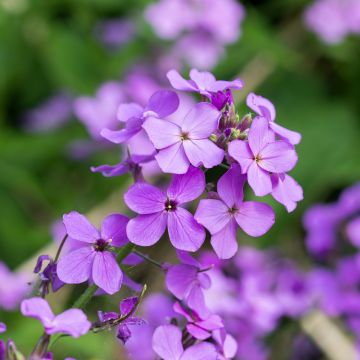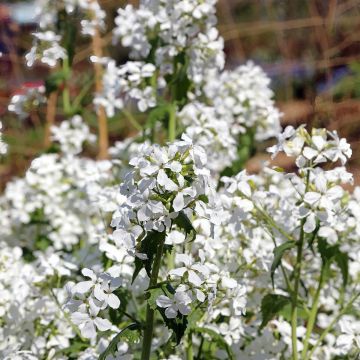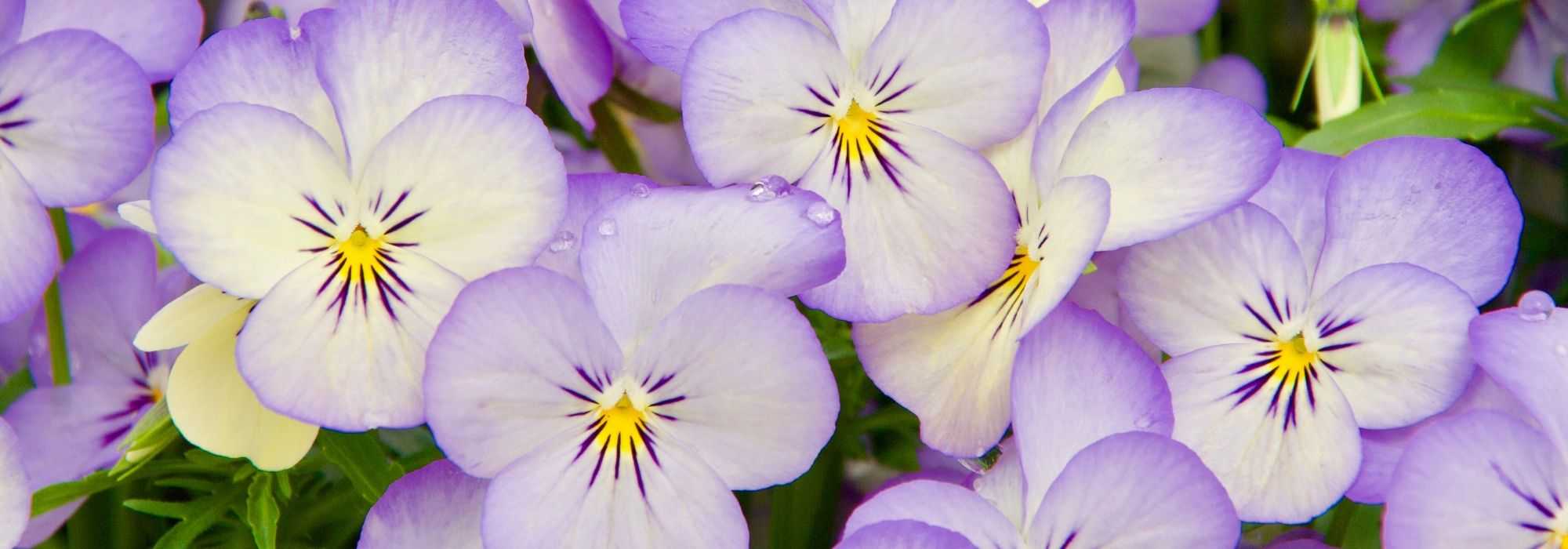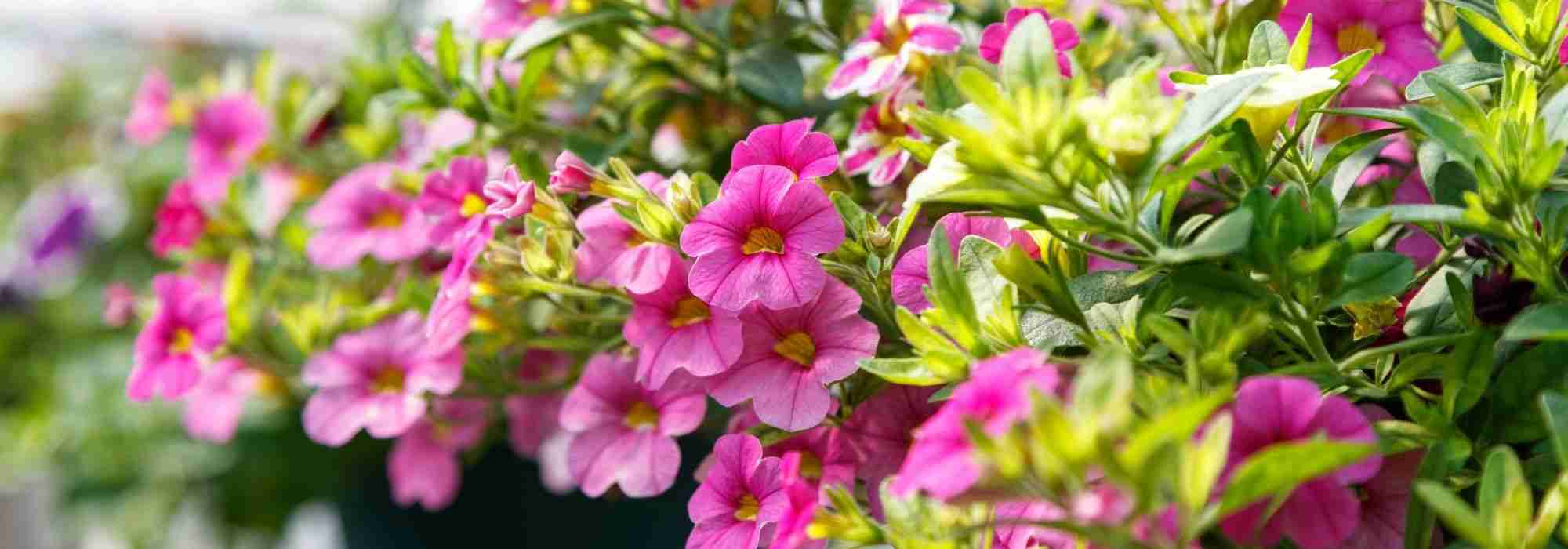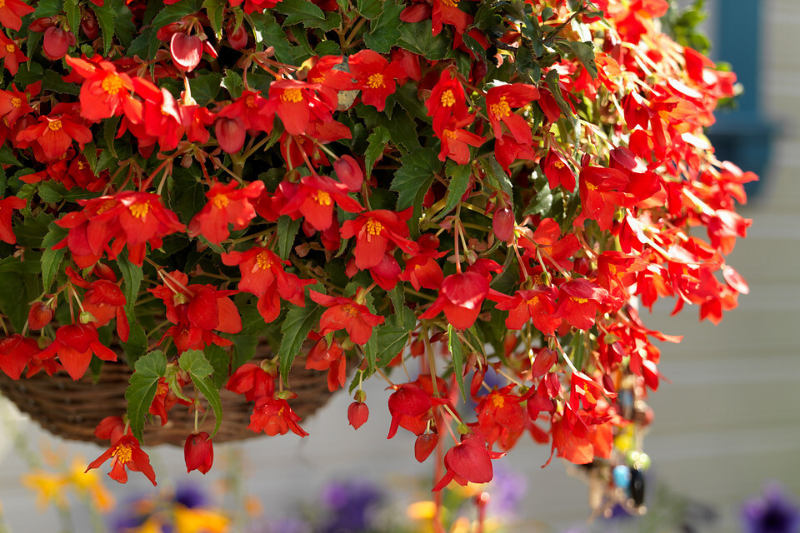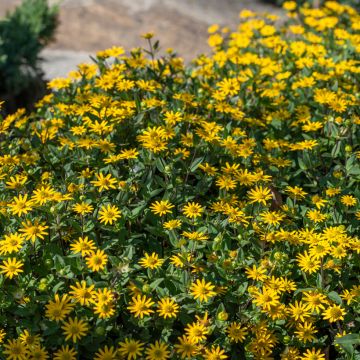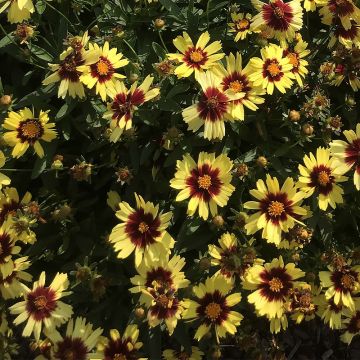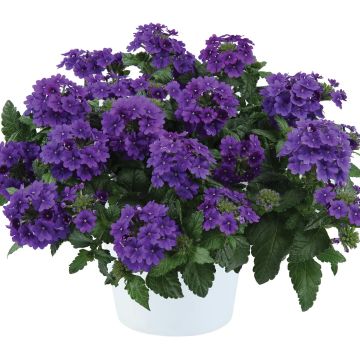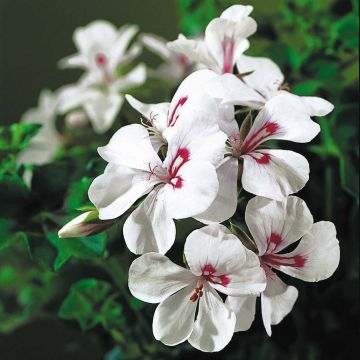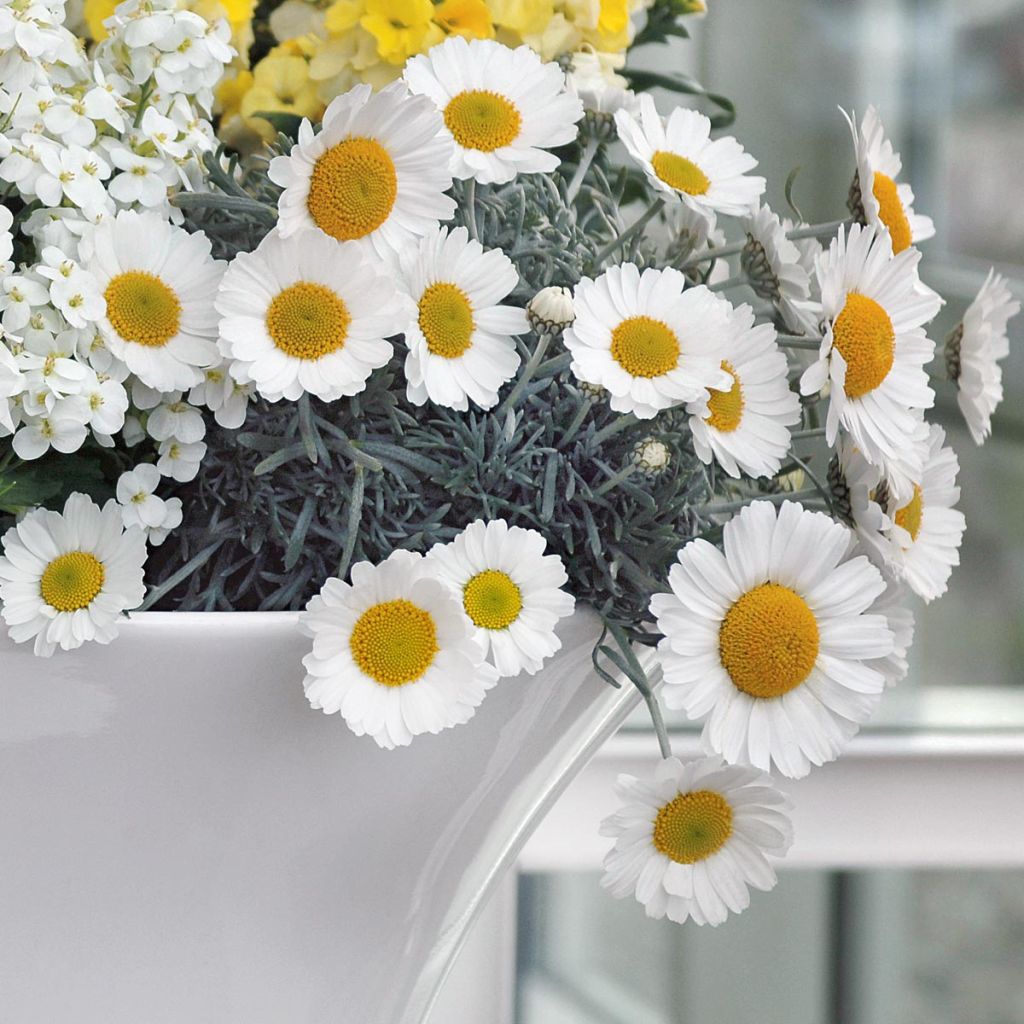

Marguerite du Maroc 'Flirt' - Rhodanthemum hosmariense
Rhodanthemum hosmariense Flirt
Rhodanthemum hosmariense Flirt
Moroccan Daisy
Very vigorous. The mini plugs were planted in autumn and the young plants have already filled out nicely with lots of small buds forming.
Marcel, 22/03/2025
Special offer!
Receive a €20 voucher for any order over €90 (excluding delivery costs, credit notes, and plastic-free options)!
1- Add your favorite plants to your cart.
2- Once you have reached €90, confirm your order (you can even choose the delivery date!).
3- As soon as your order is shipped, you will receive an email containing your voucher code, valid for 3 months (90 days).
Your voucher is unique and can only be used once, for any order with a minimum value of €20, excluding delivery costs.
Can be combined with other current offers, non-divisible and non-refundable.
Home or relay delivery (depending on size and destination)
Schedule delivery date,
and select date in basket
This plant carries a 6 months recovery warranty
More information
We guarantee the quality of our plants for a full growing cycle, and will replace at our expense any plant that fails to recover under normal climatic and planting conditions.

Would this plant suit my garden?
Set up your Plantfit profile →
Description
The 'Flirt' Moroccan Daisy (Rhodanthemum hosmariense) is a spring perennial that forms a small cushion adorned with fine silver foliage that remains evergreen. It is covered in large white daisies with golden hearts from early March: these are the very first daisies of the year!
Native to the Atlas Mountains, the Moroccan daisy (in Latin Rhodanthemum or Leucanthemum hosmariense) is actually an undershrub with a woody base. The 'Flirt' variety has flowers twice as large as those of the type species, measuring about 5cm (2in) in diameter. Nonetheless, they retain the incomparable charm and simplicity that are characteristic of all daisies! These flowers are highly decorative thanks to their large size and the combination of their light colours. The finely cut, silvery grey foliage persists all year round and forms an ideal backdrop for the flowering.
The white flowers with yellow hearts of the 'Flirt' Rhodanthemum appear very early in spring and continue to bloom constantly until early summer. Because of its decorative qualities and early flowering, it is an ideal perennial plant to use in combination with more traditional biennials such as pansies and primroses. It is also suitable for pots and containers for spring decoration on terraces, balconies, and window sills. It can then be replanted in the garden where it will appreciate a sunny location in well-drained soil, even poor and rocky, sheltered from heavy frost.
Note: Please be aware that our plug plants are professional products reserved for experienced gardeners: upon receipt, transplant them as soon as possible, in pots, containers or directly into flowerbeds.
Report an error about the product description
Flowering
Foliage
Plant habit
Botanical data
Rhodanthemum
hosmariense
Flirt
Asteraceae
Moroccan Daisy
Cultivar or hybrid
Other Biennials A to Z
View all →Planting and care
These plug plants of 'Flirt' Moroccan Daisies can be transplanted into pots and containers or directly into the ground in a finely prepared and enriched soil. Plant them as soon as possible, preferably in September or at the latest in October. If the planned location is not ready yet or the conditions are unfavourable for planting, you can grow them in pots for 4 to 6 weeks. After planting, optionally pinch the tip of the plant between your thumb and index finger to remove the terminal bud and stimulate branching.
In pots and containers, use a good potting soil for flowering plants that is well-draining (for example, with lots of bark or perlite) and enriched with slow-release fertiliser. The top of the plug should be level with the soil. Water generously at planting and during the following weeks, as plug plants can dry out quickly. However, be careful of excess water! Make sure to use containers with drainage holes and empty the saucer 10 minutes after watering. Remember to water even during winter if it doesn't rain or if the container is placed in a sheltered location. Do not water during freezing periods.
Once growth resumes, in late February or early March, and throughout the flowering period, use the watering can to apply a liquid fertiliser for flowering plants 1 to 2 times a week. Remove faded flowers to promote new blooms. Once flowering is finished, potted plants can be transplanted into the garden.
Planting period
Intended location
Care
Planting & care advice
-
, onOrder confirmed
Reply from on Promesse de fleurs
Similar products
Haven't found what you were looking for?
Hardiness is the lowest winter temperature a plant can endure without suffering serious damage or even dying. However, hardiness is affected by location (a sheltered area, such as a patio), protection (winter cover) and soil type (hardiness is improved by well-drained soil).

Photo Sharing Terms & Conditions
In order to encourage gardeners to interact and share their experiences, Promesse de fleurs offers various media enabling content to be uploaded onto its Site - in particular via the ‘Photo sharing’ module.
The User agrees to refrain from:
- Posting any content that is illegal, prejudicial, insulting, racist, inciteful to hatred, revisionist, contrary to public decency, that infringes on privacy or on the privacy rights of third parties, in particular the publicity rights of persons and goods, intellectual property rights, or the right to privacy.
- Submitting content on behalf of a third party;
- Impersonate the identity of a third party and/or publish any personal information about a third party;
In general, the User undertakes to refrain from any unethical behaviour.
All Content (in particular text, comments, files, images, photos, videos, creative works, etc.), which may be subject to property or intellectual property rights, image or other private rights, shall remain the property of the User, subject to the limited rights granted by the terms of the licence granted by Promesse de fleurs as stated below. Users are at liberty to publish or not to publish such Content on the Site, notably via the ‘Photo Sharing’ facility, and accept that this Content shall be made public and freely accessible, notably on the Internet.
Users further acknowledge, undertake to have ,and guarantee that they hold all necessary rights and permissions to publish such material on the Site, in particular with regard to the legislation in force pertaining to any privacy, property, intellectual property, image, or contractual rights, or rights of any other nature. By publishing such Content on the Site, Users acknowledge accepting full liability as publishers of the Content within the meaning of the law, and grant Promesse de fleurs, free of charge, an inclusive, worldwide licence for the said Content for the entire duration of its publication, including all reproduction, representation, up/downloading, displaying, performing, transmission, and storage rights.
Users also grant permission for their name to be linked to the Content and accept that this link may not always be made available.
By engaging in posting material, Users consent to their Content becoming automatically accessible on the Internet, in particular on other sites and/or blogs and/or web pages of the Promesse de fleurs site, including in particular social pages and the Promesse de fleurs catalogue.
Users may secure the removal of entrusted content free of charge by issuing a simple request via our contact form.
The flowering period indicated on our website applies to countries and regions located in USDA zone 8 (France, the United Kingdom, Ireland, the Netherlands, etc.)
It will vary according to where you live:
- In zones 9 to 10 (Italy, Spain, Greece, etc.), flowering will occur about 2 to 4 weeks earlier.
- In zones 6 to 7 (Germany, Poland, Slovenia, and lower mountainous regions), flowering will be delayed by 2 to 3 weeks.
- In zone 5 (Central Europe, Scandinavia), blooming will be delayed by 3 to 5 weeks.
In temperate climates, pruning of spring-flowering shrubs (forsythia, spireas, etc.) should be done just after flowering.
Pruning of summer-flowering shrubs (Indian Lilac, Perovskia, etc.) can be done in winter or spring.
In cold regions as well as with frost-sensitive plants, avoid pruning too early when severe frosts may still occur.
The planting period indicated on our website applies to countries and regions located in USDA zone 8 (France, United Kingdom, Ireland, Netherlands).
It will vary according to where you live:
- In Mediterranean zones (Marseille, Madrid, Milan, etc.), autumn and winter are the best planting periods.
- In continental zones (Strasbourg, Munich, Vienna, etc.), delay planting by 2 to 3 weeks in spring and bring it forward by 2 to 4 weeks in autumn.
- In mountainous regions (the Alps, Pyrenees, Carpathians, etc.), it is best to plant in late spring (May-June) or late summer (August-September).
The harvesting period indicated on our website applies to countries and regions in USDA zone 8 (France, England, Ireland, the Netherlands).
In colder areas (Scandinavia, Poland, Austria...) fruit and vegetable harvests are likely to be delayed by 3-4 weeks.
In warmer areas (Italy, Spain, Greece, etc.), harvesting will probably take place earlier, depending on weather conditions.
The sowing periods indicated on our website apply to countries and regions within USDA Zone 8 (France, UK, Ireland, Netherlands).
In colder areas (Scandinavia, Poland, Austria...), delay any outdoor sowing by 3-4 weeks, or sow under glass.
In warmer climes (Italy, Spain, Greece, etc.), bring outdoor sowing forward by a few weeks.


































